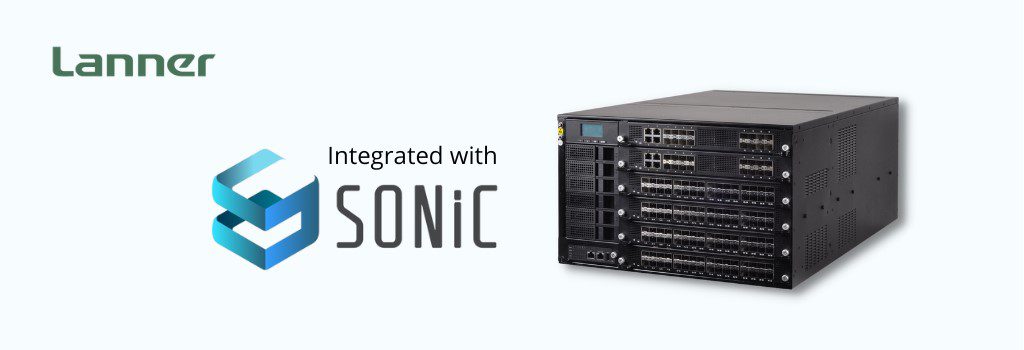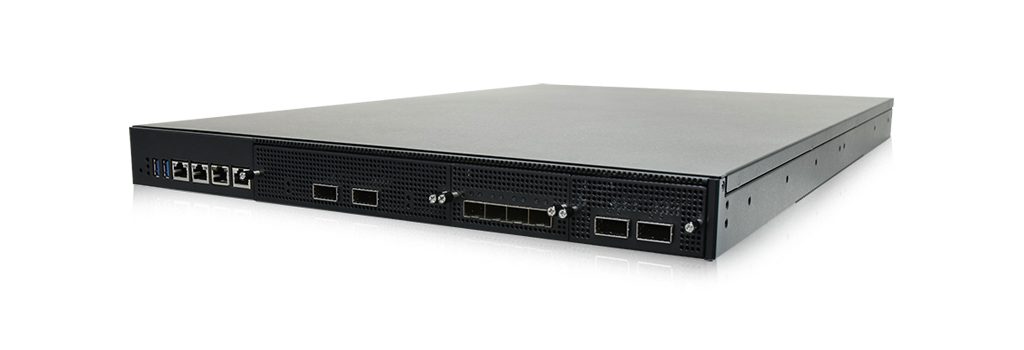MPLS will not die anytime soon. But the organizations that rely on it to connect their WANs would have to add tons of more MPLS bandwidth and infrastructure. A strategy that is not sustainable in this Big Data times. MPLS alone, will not be able to handle the tons of generated data at high speeds and still provide security.
On the other hand, organizations and enterprises that have started their journey on digital transformation have seen the value in using software-defined networks. The cheaper, more agile, and secure Software-Defined WAN (SD-WAN) is being used to connect their branch offices to their headquarters.
In this article, we will highlight the six SD-WAN latest trends that will shape SD-WAN in the near future, and that you need to be aware of! After all, SD-WAN does not stand alone. Many technologies such as cloud computing, edge computing, 5G, IoT, and AI/ML are affecting its development.
SD-WAN, as an Enabler to Multi-clouds
For the sake of simplicity, most businesses would often go for one public cloud. But larger enterprises that need the best-of-breed, end up using a multi-cloud environment. For example, they might have distributed workloads across all major platforms such as: AWS, Azure, and GCP. Unless the infrastructure is extremely updated, traditional WANs over MPLS are not capable of supporting a multi-cloud architecture. These WAN implementations are usually costly, inflexible, and cannot handle big data.
Many SD-WAN service providers have realized this trend, so they have started partnerships with the most popular cloud providers in order to meet the expectations of customers. They provide SD-WAN services tailored for the specific cloud.
In 2020, multi-cloud deployments will explode. And the SD-WAN will be in the middle of this explosion as an enabler for these environments. Enterprises with multi-clouds can leverage from SD-WAN to integrate different providers. These SD-WAN services/products can improve the performance and connectivity among those clouds.
How will SD-WAN enable multi-clouds?
- By optimizing routing paths based on the type of traffic and bandwidth.
- By accelerating traffic from and to a certain cloud.
- By prioritizing applications that are running across multi-clouds.
- By enforcing certain security and compliance policies.
Self-healing and Autonomous SD-WANs
So far, the most popular use of SD-WAN is for its easy provisioning. The technology has also been widely embraced for providing easy management and consolidation of branch offices from a central location. But thanks to its nature of programmability, SD-WAN can be much more than that. It can provide higher intelligence and awareness of the network traffic.
SD-WAN can self-heal and get over the whole hassle of traditional WAN reliability. It allows network admins to set policies that will ultimately shape traffic and provide full reliability. A self-healing SD-WAN uses AI and ML-based algorithms to make proactive forwarding decisions on a per-packet basis and reactive decisions when a problem is encountered.
If a transport method fails, the autonomous and self-healing SD-WAN can quickly identify changes and adapt.
An autonomous and self-healing SD-WAN can recover and maintain a high Quality of Experience (QoE) for mission-critical applications within an organization. All application packets are guided by advanced AI and ML algorithms, which constantly measure the quality of links and traffic.
Thanks to the improvement in AI and ML algorithms we will start seeing more autonomous and self-healing SD-WANs within the year 2020.
SD-WAN on Hybrid-Cloud Deployments
According to statistics from Forbes, it is predicted that by 2020, 41% of the enterprise workloads will run on the public clouds. While the on-premise workloads will shrink 10% (37% to 27%) as everybody is moving them to the clouds. But the hybrid environments (a combination of both) are slightly increasing, from 20% to 22%.
A 2% rate of growth is a slow transition for the hybrid. And the public cloud will probably get a large percentage of all workloads. But why is it that some enterprises are still purchasing new on-premises servers?
One of the biggest reasons is that organizations want to avoid cloud lock-ins. There are also new emerging technologies that empower servers on-premises, for example, new AMD processors, SSD servers, and even the new powerful HyperConverged Infrastructure (HCI). On-premises or colocated servers will also enable other key players such as edge computers and IoT devices that need to be closer to the end-user.
SD-WAN will be a key player for hybrid-cloud deployments in 2020. It will allow data centers to be extended into public clouds, and vice-versa. The technology can seamlessly and securely connect services that are hosted in an on-premises data center or cloud.
SD-WAN will also address hybrid-cloud challenges such as:
- Security between sites (on-premises branch, headquarters, and cloud).
- WAN orchestration.
- Consistent and compatible networking services between sites and vendors.
- Awareness of mission-critical traffic to prioritize and guarantee bandwidth.
- Geographical remoteness.
Managed Security Stack Offerings with SD-WAN
According to Futuriom’s SD-WAN Managed Services Survey, about 62% of end-users ranked the integrated security as their main reason for using SD-WAN.
SD-WAN separates traffic between management, data, and control planes. This separation provides inherent security capabilities which can be enough for simple security requirements. With SD-WAN, you can, for example, allow/deny certain IPs or cap the amount of bandwidth that goes to certain websites.
SD-WAN can also improve security with:
- VPN-like tunnels. SD-WAN eliminates the need to configure VPNs at the edge of the network. If a user wants to encrypt the traffic from point A to point B across the Internet, the SD-WAN controller creates the IPSec tunnels automatically between the source and destination.
- Traffic separation. When forwarding traffic to an untrusted public network or to a safe site, SD-WAN can create a split-tunnel to route traffic to the firewall and directly to a safe place. Separating traffic saves the computational power of security devices such as firewalls because they don’t have to do separate the entire traffic.

But far from the inherent security capabilities, in 2020, we will start to hear more about the managed SD-WAN offerings. Network operators and service providers are leveraging their infrastructure to offer SD-WAN-as-a-Service and other virtual network functions at the edge deployed on open architecture based uCPE platforms.
We are seeing advanced security services such as NextGen Firewall, data loss prevention, Unified Threat Management (UTM), log reporting and alerting, security analytics with ML and behavior analysis, IDS/IPS, threat intelligence, and more, being packaged in SD-WAN solutions and services. And some providers are even offering SOC services with full-time monitoring and incident response teams.
SD-WAN over 5G: New Bandwidth Requirements
Many organizations have turned to SD-WAN to achieve the highest performance, reliability, and security. SD-WAN allows branch users to connect to the HQ or to critical-mission applications in the cloud using a variety of underlying transport solutions, such as MPLS, broadband Internet, or mobile 4G/LTE.
As for 2019, many enterprises used the 4G/LTE mobile networks as a backup for MPLS WAN connections, and in some cases with SD-WAN as well. But still, LTE and other mobile network connections are not the primary transport links, because they lack speed, reliability, and security. But in some cases where fixed lines are not available and the geography puts limitations, mobile might be the only transport solution.
The 5G next-generation mobile technology came at the right time to open lots of new opportunities for SD-WAN. 5G provides the mobility and speed that the fiber MPLS deployments simply cannot.
In 2020, 5G will be used as a failover solution until the technology matures. But soon, it will be used as the main transport technology for branch sites, alongside fiber.
The SD-WAN will use 5G underlay networks for:
- Primary access and load balancing.
- Reach remote geographic locations.
- Improve security and bandwidth.
SD-WAN will also create opportunities for 5G because it introduces virtualization in the edge network. Software-Defined Networks will virtualize the 5G core and Access Networks.
[sc name=”the-edge-invite” ]
The Rise of uCPE
In contrast to the Customer Premises Equipment (CPE), which is a dedicated piece of hardware installed on the customer premises to perform a specific task, the virtual CPE can run any networking function on generic hardware. The uCPE uses software-based functions to perform operations that were usually executed by hardware.
A remote service provider or central management platform can host all Virtualized Network Functions (VNF) and push them to the uCPE as necessary. The uCPE runs the VNFs on commodity hardware rather than the proprietary ASICs, that executed specific network functions on ordinary CPEs.
In 2019, SD-WAN was considered one of the best use cases for uCPE. And according to a Gartner report, it is predicted that “by 2023, more than 90% of all WAN edge infrastructure refresh initiatives will be based on uCPE platforms or SD-WAN software/appliances.”
An SD-WAN managed service provider can use a uCPE located at the branch to deliver services through software. The provider can push the SD-WAN VNFs to the uCPE at the branch through the SD-WAN gateway.
The uCPE helps to quickly replace the traditional WAN branch routers with generic appliances that run virtual instances.
Some more benefits?
- Zero-touch SD-WAN provisioning.
- It provides accelerated SD-WAN service deployment.
- Ready with security and management.
At the basic level, the uCPE devices come with generic Intel-x86 multi-core CPU so that they are able to run multiple VNFs. The best advantage is that some of these uCPEs are also pre-validated with major VNFs and SD-WAN providers. An example is Lanner’s NCA-1513 uCPE gateway controller which enables SD-WAN applications for branch office networks.











